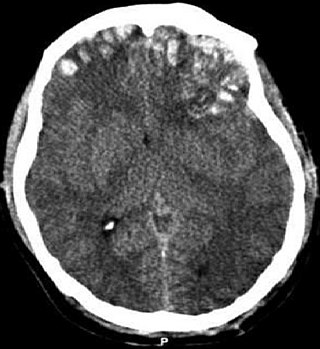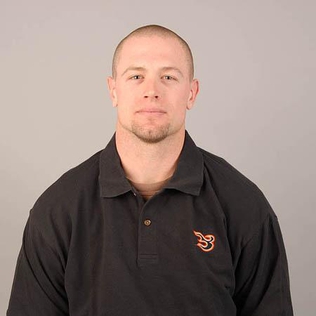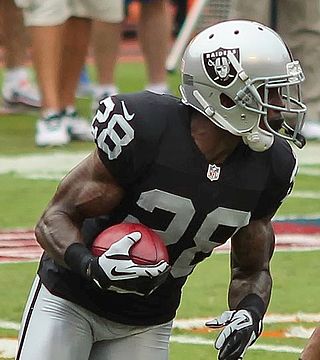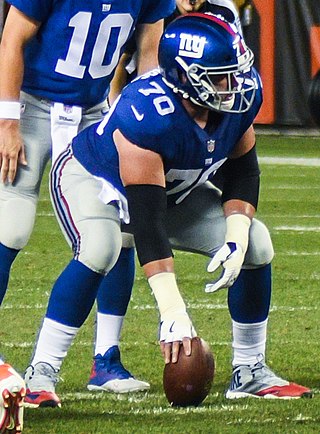
A concussion, also known as a mild traumatic brain injury (mTBI), is a head injury that temporarily affects brain functioning. Symptoms may include headache, dizziness, difficulty with thinking and concentration, sleep disturbances, mood changes, a brief period of memory loss, brief loss of consciousness; problems with balance; nausea; blurred vision; and mood changes. Concussion should be suspected if a person indirectly or directly hits their head and experiences any of the symptoms of concussion. Symptoms of a concussion may be delayed by 1–2 days after the accident. It is not unusual for symptoms to last 2 weeks in adults and 4 weeks in children. Fewer than 10% of sports-related concussions among children are associated with loss of consciousness.

A traumatic brain injury (TBI), also known as an intracranial injury, is an injury to the brain caused by an external force. TBI can be classified based on severity ranging from mild traumatic brain injury (mTBI/concussion) to severe traumatic brain injury. TBI can also be characterized based on mechanism or other features. Head injury is a broader category that may involve damage to other structures such as the scalp and skull. TBI can result in physical, cognitive, social, emotional and behavioral symptoms, and outcomes can range from complete recovery to permanent disability or death.

Michael Lewis Webster was an American professional football center in the National Football League (NFL) from 1974 to 1990 with the Pittsburgh Steelers and Kansas City Chiefs. He is a member of the Pro Football Hall of Fame, class of 1997. Nicknamed "Iron Mike", Webster anchored the Steelers' offensive line during much of their run of four Super Bowl victories from 1974 to 1979 and is considered by many the greatest center in NFL history.
Post-concussion syndrome (PCS), also known as persisting symptoms after concussion, is a set of symptoms that may continue for weeks, months, or years after a concussion. PCS is medically classified as a mild traumatic brain injury (TBI). About 35% of people with concussion experience persistent or prolonged symptoms 3 to 6 months after injury. Prolonged concussion is defined as having concussion symptoms for over four weeks following the first accident in youth and for weeks or months in adults.
Toi Fitzgerald Cook is an American former professional football player who was selected by the New Orleans Saints in the eighth round of the 1987 NFL draft. A 5'11", 188 lb (85 kg). defensive back from Stanford University, he played in 11 NFL seasons from 1987 to 1997. In 1992, he had a career-high six interceptions for 90 yards and one touchdown for the Saints. He appeared in Super Bowl XXIX for the victorious San Francisco 49ers, and had an interception in the game. Before his NFL career, he was an outfielder, and the leadoff hitter, on Stanford's 1987 College World Series national champion baseball team.

Chronic traumatic encephalopathy (CTE) is a neurodegenerative disease linked to repeated trauma to the head. The encephalopathy symptoms can include behavioral problems, mood problems, and problems with thinking. The disease often gets worse over time and can result in dementia.
Fulton Gerald Kuykendall was an American professional football player who was a linebacker in the National Football League (NFL), primarily for the Atlanta Falcons. He played college football for the UCLA Bruins and was selected in the sixth round of the 1975 NFL draft. He played in the NFL for the Falcons and the San Francisco 49ers from 1975 to 1985.

Justin Earl Skaggs was an American football player. He played college football at Evangel University. After going undrafted in the 2001 NFL draft, Skaggs went on to have a seven-year professional football career in the National Football League (NFL), NFL Europe, and Arena Football League (AFL).
Brent Boyd is an American former professional football player who was an offensive guard and an advocate for retired football players. He is considered by many to be the "father" of the concussion awareness issue due to his three US Congressional testimonies and media crusade to fight for proper treatment of NFL retirees, their wives and families, and all people who suffer from traumatic brain injuries.

Ayub Khan Ommaya, MD, ScD (hc), FRCS, FACS (1930–2008) was a Pakistani American neurosurgeon and the inventor of the Ommaya reservoir. The reservoir is used to provide chemotherapy directly to the tumor site for brain tumors. Ommaya was also a leading expert in traumatic brain injuries.
Jeffrey Hugh Staggs was an American college and professional football player who played for the San Diego State Aztecs and San Diego Chargers.
The fencing response is an unnatural position of the arms following a concussion. Immediately after moderate forces have been applied to the brainstem, the forearms are held flexed or extended for a period lasting up to several seconds after the impact. The fencing response is often observed during athletic competition involving contact, such as combat sports, American football, ice hockey, rugby union, rugby league and Australian rules football. It is used as an overt indicator of injury force magnitude and midbrain localization to aid in injury identification and classification for events including on-field and/or bystander observations of sports-related head injuries.

Phillip Matthew Adams was an American professional football cornerback and murderer. He played college football for the South Carolina State Bulldogs and was drafted in the seventh round of the 2010 NFL draft by the San Francisco 49ers. He also played for the New England Patriots, Seattle Seahawks, Oakland Raiders, New York Jets, and Atlanta Falcons.

Daniel Mametta Colchico was an American athlete who played defensive end in the National Football League (NFL).
Concussions and play-related head blows in American football have been shown to be the cause of chronic traumatic encephalopathy (CTE), which has led to player deaths and other debilitating symptoms after retirement, including memory loss, depression, anxiety, headaches, stress, and sleep disturbances.
Concussion, a type of mild traumatic brain injury that is caused by a direct or indirect hit to the head, body, or face is a common injury associated with sports and can affect people of all ages. A concussion is defined as a "complex pathophysiological process affecting the brain, induced by biomechanical forces". A concussion should be suspected in any person who falls or has a hit to their face or their body and has a visible sign/clue that they may have a concussion or experiences any symptoms of concussion. The Concussion Recognition Tool 6 (CRT6) can be used to help non-medically trained people manage sport related concussion on the sideline to ensure that they are directed to the appropriate care. Symptoms of concussion can be felt right away or appear over the first 1-2 days after an accident. If an athlete has a suspected sport-related concussion they should not return to play that day, not be left alone for the first three hours after their injury, not drive until cleared by a medical professional, and not return to any activity that has a risk of hitting their head or falling until they have a medical assessment. If the person has worsening symptoms or any 'red flag symptoms', they need immediate medical attention. Concussions cannot be seen on X-rays or CT scans.
A sports-related traumatic brain injury is a serious accident which may lead to significant morbidity or mortality. Traumatic brain injury (TBI) in sports are usually a result of physical contact with another person or stationary object, These sports may include boxing, gridiron football, field/ice hockey, lacrosse, martial arts, rugby, soccer, wrestling, auto racing, cycling, equestrian, rollerblading, skateboarding, skiing or snowboarding.

League of Denial is a 2013 book, initially broadcast as a documentary film, about traumatic brain injury in the National Football League (NFL), particularly concussions and chronic traumatic encephalopathy (CTE). The documentary, entitled League of Denial: The NFL's Concussion Crisis, was produced by Frontline and broadcast on PBS. The book was written by ESPN reporters Mark Fainaru-Wada and Steve Fainaru. The book and film devote significant attention to the story of Mike Webster and his football-related brain injuries, and the pathologist who examined Webster's brain, Bennet Omalu. The film also looks closely at the efforts of researchers led by Ann McKee at Boston University's Center for the Study of Traumatic Encephalopathy, where the brains of a number of former NFL athletes have been examined.

Weston Blaine Richburg is an American former professional football player who was a center in the National Football League (NFL). He played college football for the Colorado State Rams and was selected by the New York Giants in the second round of the 2014 NFL draft, and also played for the San Francisco 49ers.
BrainScope Company, Inc. (BrainScope) is a medical neuro-technology firm utilizing EEG technology to assess the full spectrum of mild traumatic brain injury (mTBI), including functional injuries, and structural injuries. BrainScope was founded in 2006 and is headquartered in Bethesda, Maryland.










